-
CATEGORY ::
- All Seeds /
- All Flower Seeds /
- All Poppy Seeds








Poppy Seeds - Red
SEEDS PER POUND
3,400,000
SEASON
Annual
USDA ZONES
3 - 9
HEIGHT
12 - 15 inches
BLOOM SEASON
Summer
BLOOM COLOR
Red
ENVIRONMENT
Full sun
SOIL TYPE
Loose, well-drained, pH 6.1 - 7.3
DEER RESISTANT
Yes
SEASON
Perennial
USDA ZONES
5 - 10
HEIGHT
8 - 10 inches
BLOOM SEASON
Late spring to late summer
BLOOM COLOR
Mix
ENVIRONMENT
Full sun
SOIL TYPE
Loam to sandy loam, pH 5.1 - 6.5
DEER RESISTANT
Yes
SEASON
Perennial
USDA ZONES
3 - 8
HEIGHT
12 inches
BLOOM SEASON
Mid spring to early summer
BLOOM COLOR
Orange
ENVIRONMENT
Full sun
SOIL TYPE
Loose, well-drained, pH 6.1 - 7.3
DEER RESISTANT
Yes
SEASON
Annual
USDA ZONES
3 - 10
HEIGHT
10 - 12 inches
BLOOM SEASON
Mid spring to late summer
BLOOM COLOR
Mix
ENVIRONMENT
Full sun
SOIL TYPE
Prefers gritty, fast-draining conditions, pH 6.6 - 7.5
DEER RESISTANT
Yes
SEASON
Annual
USDA ZONES
3 - 10
HEIGHT
12 inches
BLOOM SEASON
Mid spring to late summer
BLOOM COLOR
Pink
ENVIRONMENT
Full sun
SOIL TYPE
Prefers gritty, fast-draining conditions, pH 6.6 - 7.5
DEER RESISTANT
Yes
SEASON
Annual
USDA ZONES
3 - 10
HEIGHT
10 inches
BLOOM SEASON
Mid spring to late summer
BLOOM COLOR
Yellow
ENVIRONMENT
Full sun
SOIL TYPE
Prefers gritty, fast-draining conditions, pH 6.6 - 7.5
DEER RESISTANT
Yes
SEASON
Annual
USDA ZONES
3 - 10
HEIGHT
10 inches
BLOOM SEASON
Mid spring to late summer
BLOOM COLOR
White
ENVIRONMENT
Full sun
SOIL TYPE
Prefers gritty, fast-draining conditions, pH 6.6 - 7.5
DEER RESISTANT
Yes
SEASON
Annual
USDA ZONES
3 - 10
HEIGHT
10 inches
BLOOM SEASON
Mid spring to late summer
BLOOM COLOR
Red
ENVIRONMENT
Full sun
SOIL TYPE
Prefers gritty, fast-draining conditions, pH 6.6 - 7.5
DEER RESISTANT
Yes
About...
Red Poppy (Papaver Rhoeas) - The drought tolerant Red Poppy is one of the most popular wildflowers in all the world, and it easily establishes from Poppy seeds. It is also known as Shirley Poppy, Flanders Poppy, American Legion Poppy, (the red poppy is the symbol of the American Legion, handed out for Memorial Day), and in England, Corn Poppy.
MORE POPPY OPTIONS
Planting Directions
TEMPERATURE
55 - 60F
AVERAGE GERM TIME
21 - 28 days
LIGHT REQUIRED
Yes
DEPTH
Do not cover the seed but press into the soil
SOWING RATE
2/3 ounce per 1,000 square feet or 2 pounds per acre
MOISTURE
Keep seeds moist until germination
PLANT SPACING
12 inches
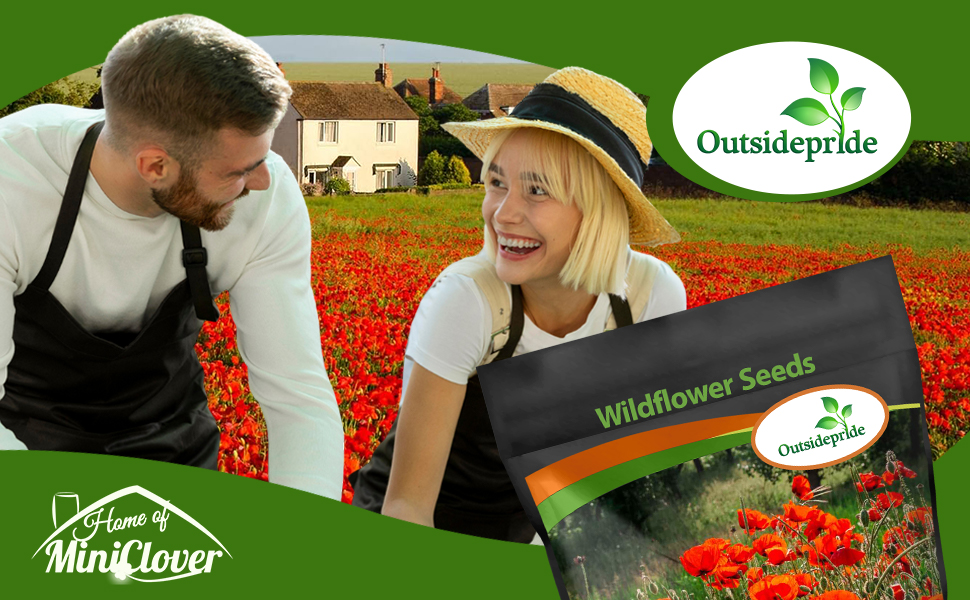
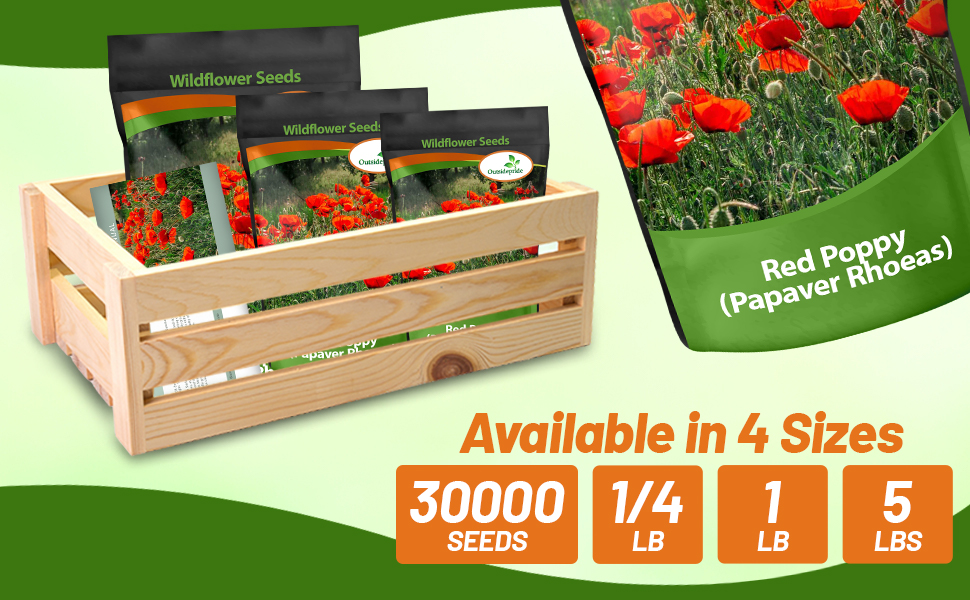
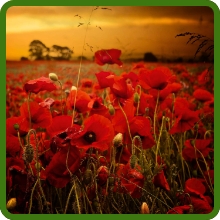
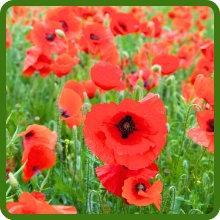
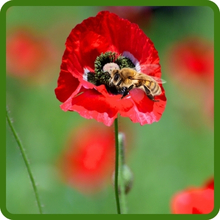
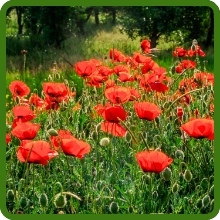
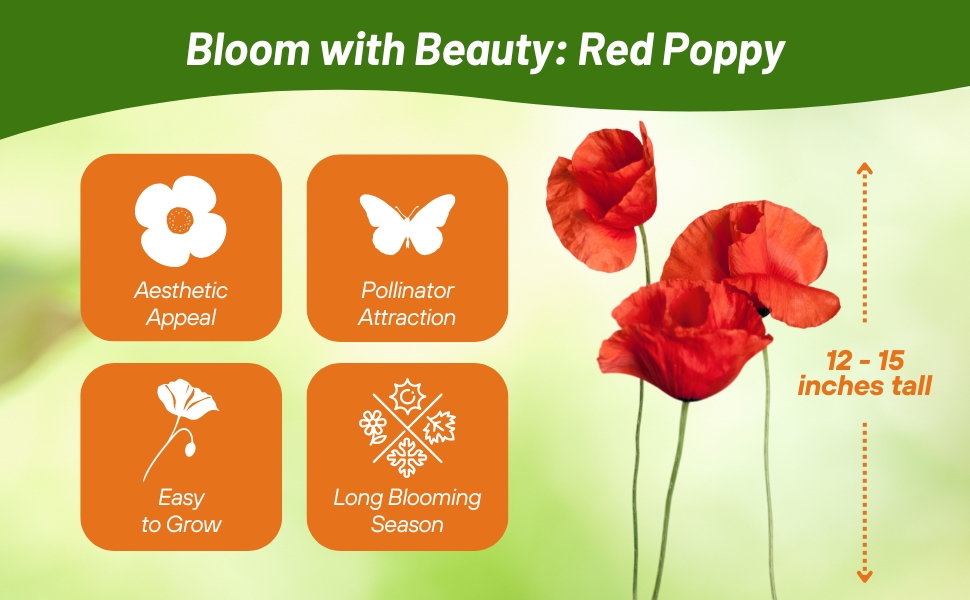
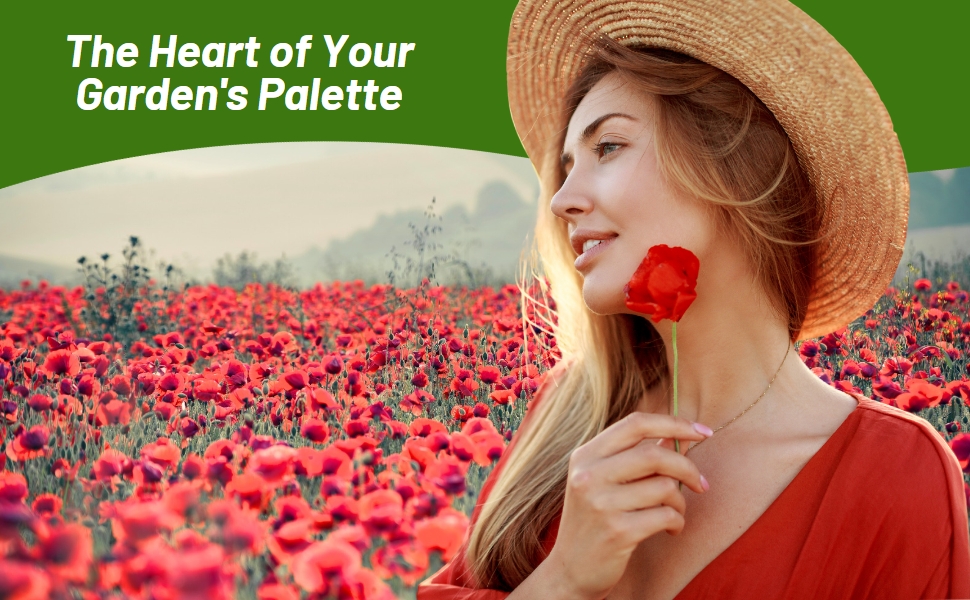
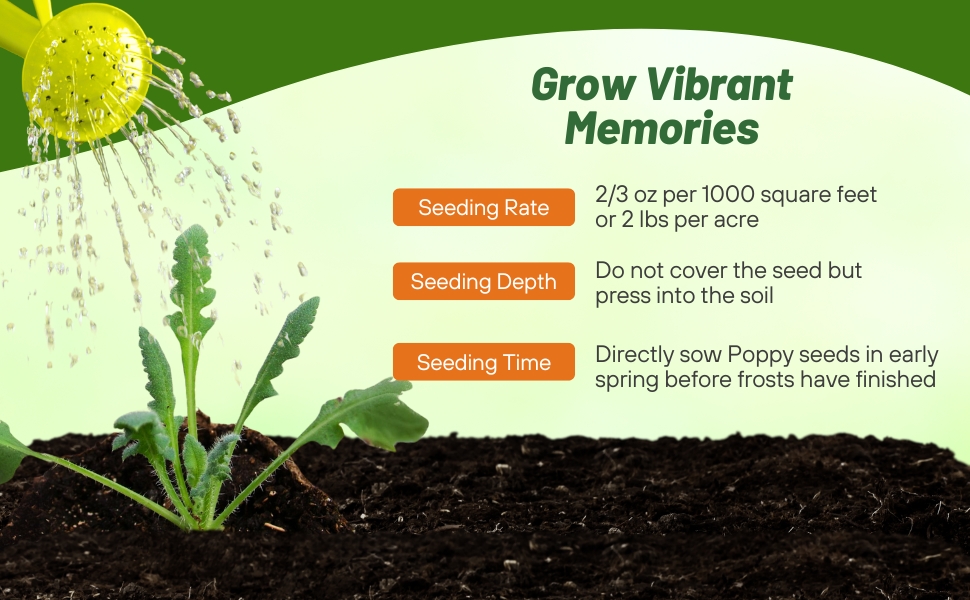
Red Poppy (Papaver Rhoeas) - The drought tolerant Red Poppy is one of the most popular wildflowers in all the world, and it easily establishes from Poppy seeds. It is also known as Shirley Poppy, Flanders Poppy, American Legion Poppy, (the red poppy is the symbol of the American Legion, handed out for Memorial Day), and in England, Corn Poppy. This wildflower is native to most of all Europe and North Africa. Growing Poppies from seed is such a rewarding experience. Red Poppies are favorites with xeriscape gardeners because they grow so successfully from wildflower seed, and they transform a dull boring landscape into an intense display of gorgeous red blooms. Since they are annuals, they grow quickly from flower seeds each spring and drop new Red Poppy wildflower seed in the fall.
Common Questions
Do I need to deadhead Papaver rhoeas?
This is optional; however, it will extend your bloom season.
Do I need to fertilizer Papaver rhoeas?
Typically, no. However, if you notice foliage and no flowers your plants may be in need of phosphorus-rich fertilizer.
Are these flowers fragrant?
They are not known for their scent, but they are valued highly for their blooms.
Planting Directions
TEMPERATURE
68F
AVERAGE GERM TIME
7 - 14 days
LIGHT REQUIRED
Yes
DEPTH
Do not cover seed
SOWING RATE
5 - 6 seeds per plant
MOISTURE
Keep seeds moist until germination
PLANT SPACING
6 - 9 inches





Alpine Poppy (Papaver Alpinum) - Start Alpine Poppy seeds for this short-growing perennial Poppy plant. This colorful mix of Poppy flowers range from orange, yellow, cream and scarlet. The blooms are 1 - 2 inches across. The Papaver Alpinum Poppy is well-suited to high elevations, and it originally came from the Alps. Alpine Poppy plants have strong taproots and make a good rockery plant. Alpine Poppies do best in average garden soils that drain well. How To Grow Poppies from Flower Seeds: Directly sow Alpine Poppy seeds into prepared seed beds. Clear the bed of weeds and loosen the top several inches of soil. Press the flower seeds into the soil and keep moist. Poppy seeds can be started in the early spring and do best in cool temperatures.
Common Questions
Are alpine poppy easy to grow?
Yes, these are easy to grow and virtually carefree.
What are common landscape styles to use alpine poppies?
These flowers make a lovely addition to rock gardens, gravel gardens, cottage gardens and the front of borders.
How long to these poppies take to bloom?
Alpine poppies if planted in the fall or early spring will bloom their first season.
Planting Directions
TEMPERATURE
60 - 65F
AVERAGE GERM TIME
14 - 21 days
LIGHT REQUIRED
Yes
DEPTH
Surface sow seeds just barely covering
SOWING RATE
3 - 4 seeds per plant
MOISTURE
Keep seeds moist until germination
PLANT SPACING
8 - 10 inches
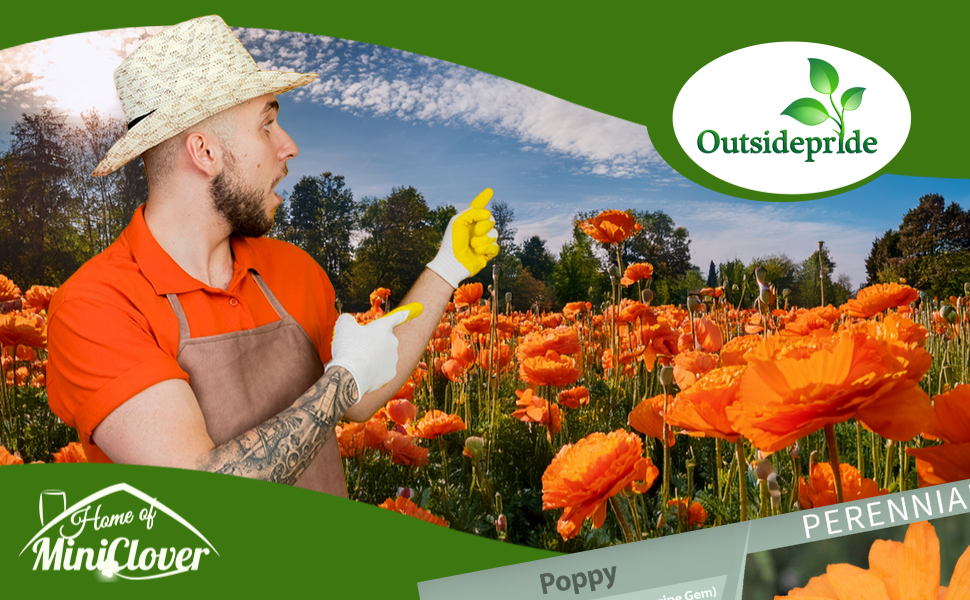
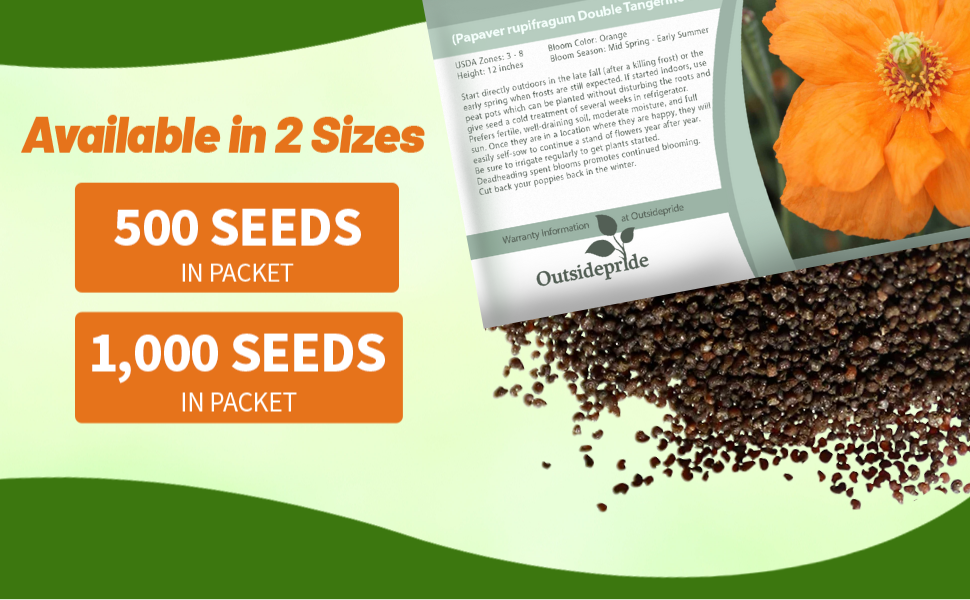
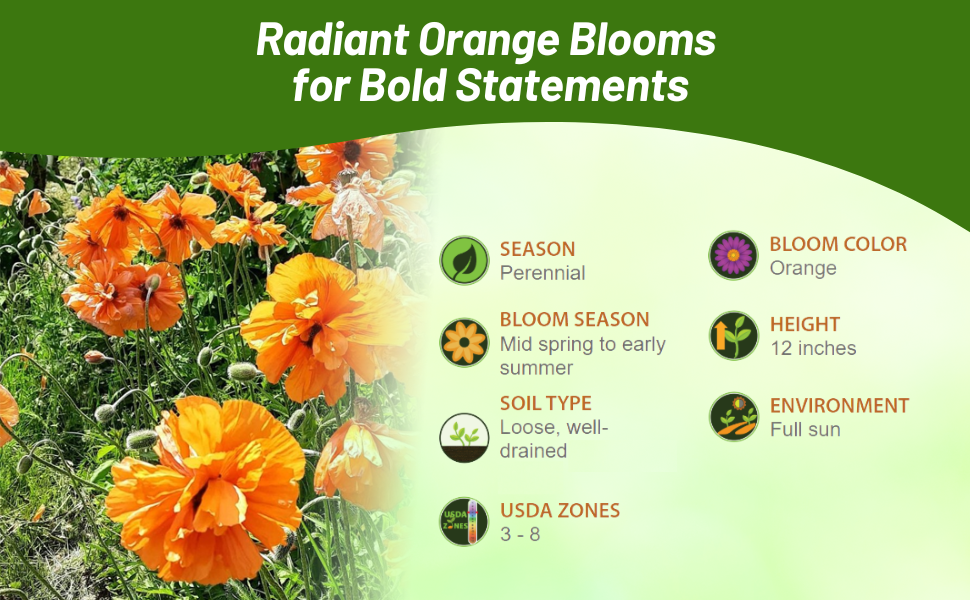
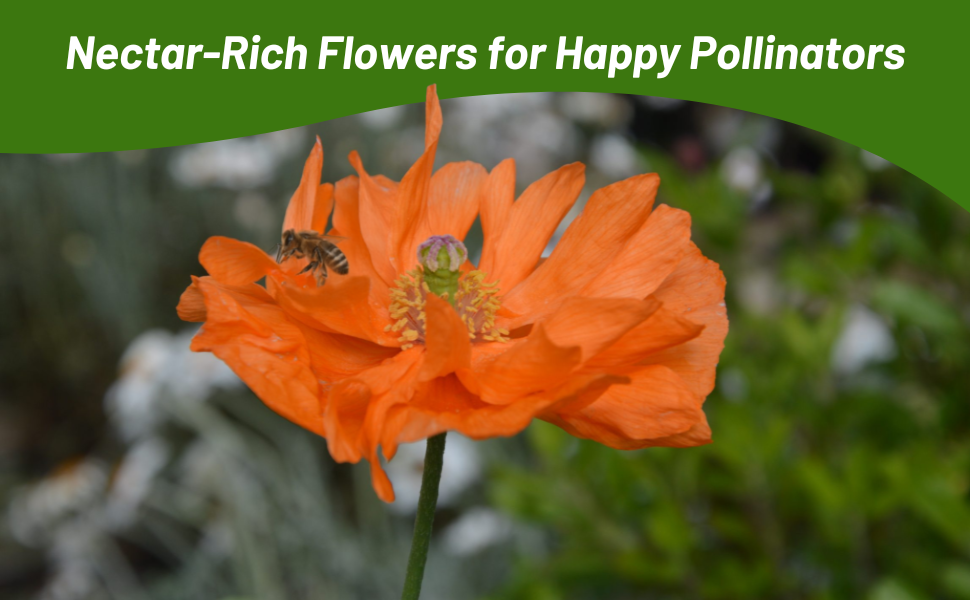

Poppy (Papaver rupifragum Double Tangerine Gem) - This perennial flower is a native of Morocco and brings saturated tangerine tones to the most rocky and arid landscapes. Fully double orange blooms of overlapping rings of paper-thin silky petals with Ferny, silver-blue foliage only growing 12 inches tall. Sunlight makes the translucent petals of Papaver Double Tangerine positively glow with color. The fascinating attractive seedpods will add a nice touch to dried arrangements. This cute little robust plant looks best in a rock garden or edging a hot, sunny border.
This pollinator-attracting blooms in the first year and reseeds readily. In 1890, Sir William Jackson Hooker described finding P. rupifragum growing in dry, rocky places of southern Morocco at an elevation of 6,000 - 7,000 feet. Indeed, this drought-tolerant plant is perfect for meadows, xeriscaping, rocky gardens, and sunny, dry locations!



























